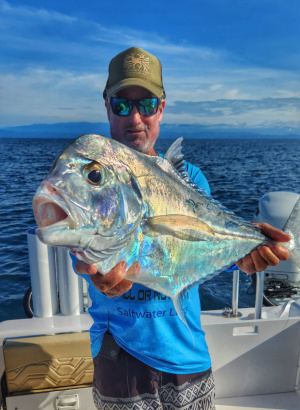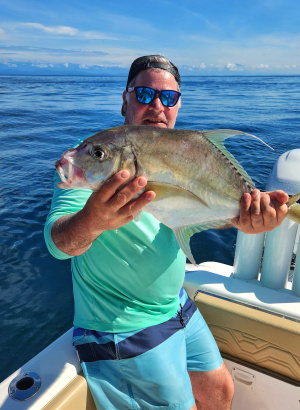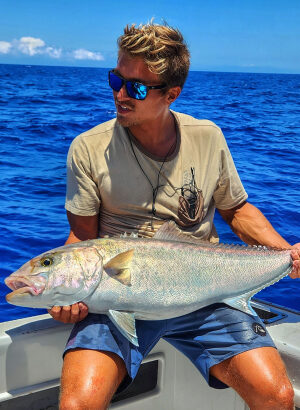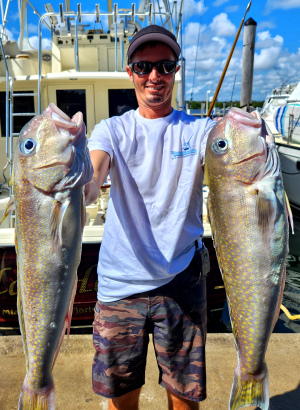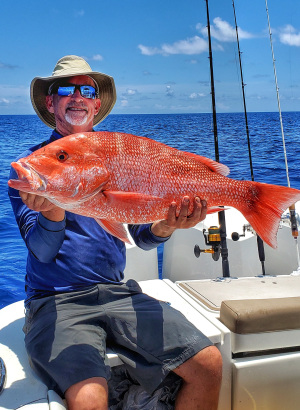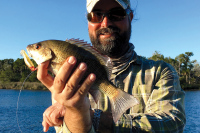Bottom fishing is a popular saltwater fishing technique that targets specific species of fish near the bottom of a body of water, such as grouper, snapper, and tilefish. It is an effective method compared to other methods like trolling or casting, and can be a fun and rewarding way to spend time on the water.
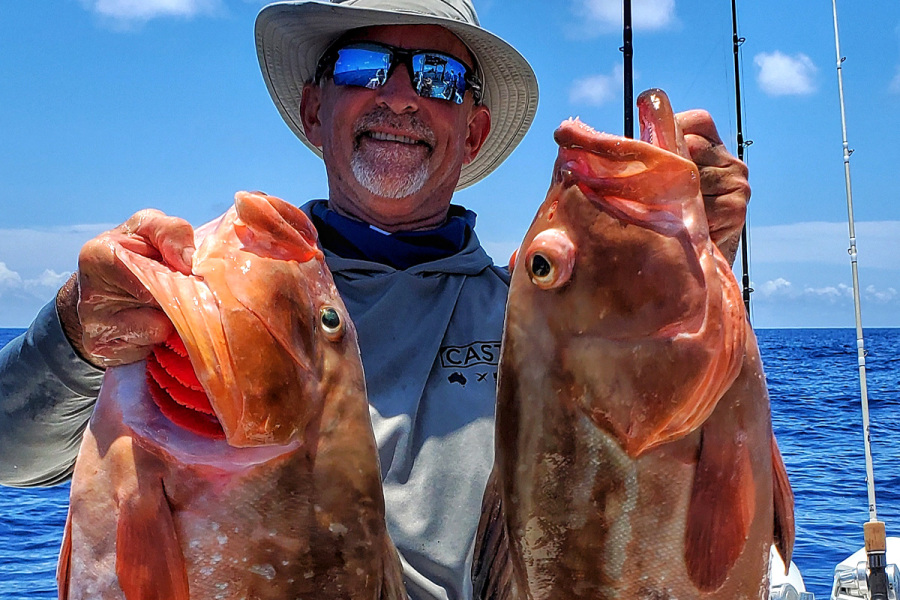
Bottom Fishing – Know the Basics
Bottom fishing is a popular saltwater fishing technique that involves targeting fish that live and feed near the bottom of a body of water. This can include species like grouper, snapper, tilefish, and many others.. When you think about it, many of the fish species that can be caught bottom fishing, make up some of the most outstanding table fare. It is also an unique way to target specific species of fish that can be difficult to catch using other methods.
At In The Spread, we specialize in providing high-quality educational videos that are designed to help anglers improve their fishing skills. Our videos feature expert fishermen who are considered to be the best in the world when it comes to catching specific game fish species. If you want to learn advanced fishing techniques and improve your skillset with our instructional videos, check out Bottom Fishing Videos. Be sure to also take a look at our grouper fishing videos and snapper fishing videos, as there is tons more to learn there.
In this article, we will provide an overview of bottom fishing techniques and explain how In The Spread can help you improve your skills and become a more successful bottom fisherman. Whether you're an experienced angler or just starting out, we hope that this article will provide you with the information you need to succeed when bottom fishing in saltwater environments.
Importance of bottom fishing for saltwater anglers
Bottom fishing is an important technique for saltwater anglers because it allows them to target specific species of fish that are known to live near the bottom of the ocean. This can be a more effective way to catch these fish than other methods, such as trolling or casting. Additionally, bottom fishing can be a fun and rewarding way to spend time on the water, and can lead to some impressive catches.
Bottom Fishing Basics
Bottom fishing is a specific type of fishing technique that involves targeting fish that live and feed on or near the ocean floor. This is different from other types of fishing, such as casting or trolling, which generally involve targeting fish that are swimming in open water. Bottom fishing can be done from a boat or from the shore, and often requires specialized rigs and tackle to keep the bait near the bottom.
Bottom Fishing Rigs and Tackle
Bottom fishing rigs are specialized setups designed to keep the bait near the ocean floor. These can include a variety of components, such as hooks, weights, swivels, and leader material. Some popular bottom fishing rigs include the Carolina rig, knocker rig, and fish finder rig. When it comes to tackle, anglers often use heavy-duty rods and reels, along with braided or monofilament fishing line.
Overview of Rods and Reels
When it comes to bottom fishing, having the right rods and reels can make all the difference. Bottom fishing rods are typically longer and heavier than other types of fishing rods, which helps to provide the necessary strength and leverage to reel in larger fish. They also often have sensitive tips that allow anglers to feel even the slightest bites on the bait.
For reels, many anglers opt for conventional reels, which provide more power and control when reeling in larger fish. These reels typically have a higher gear ratio, which allows anglers to quickly retrieve their line when needed. In recent years, some anglers have also started to use electric reels for bottom fishing, which can make the process of reeling in large fish easier and less fatiguing.
By understanding the basics of bottom fishing rigs, rods, and reels, anglers can improve their chances of success when targeting fish that live near the ocean floor. At In The Spread, we offer a wide range of educational videos that cover all aspects of bottom fishing, including the gear and tackle needed to succeed.
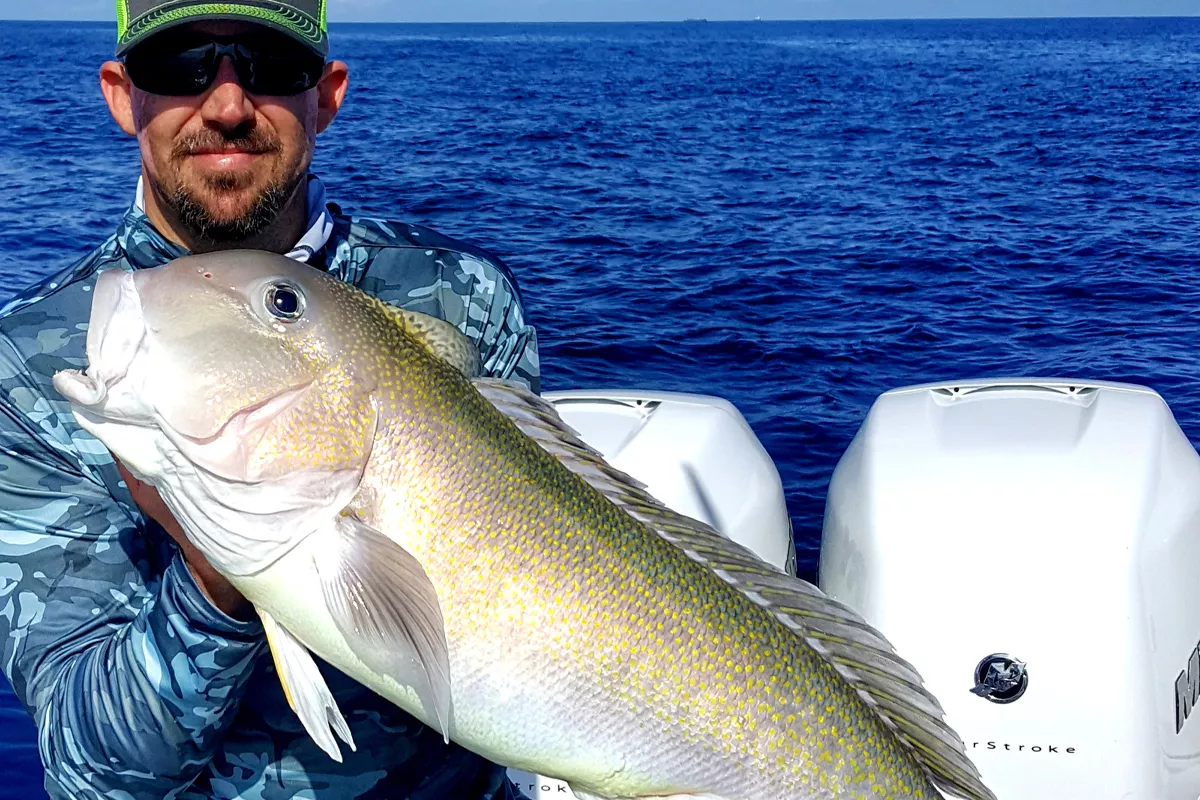
Choosing the Right Setup
Choosing the right bottom fishing rig is crucial for success. The type of rig you use will depend on a variety of factors, such as the type of fish you are targeting, the depth and structure of the ocean floor, and the strength of the current. Some popular bottom fishing rigs include the Carolina rig, knocker rig, and fish finder rig, each with their own advantages and disadvantages.
Explanation of Different Types of Bottom Fishing Weights
Weights are an essential component of any bottom fishing setup. They are used to keep the bait near the bottom and to help anglers feel when a fish takes the bait. There are several types of weights to choose from, including egg sinkers, bank sinkers, and pyramid sinkers. The type of weight you use will depend on the depth and strength of the current, as well as the type of rig you are using.
Tips for Choosing the Right Hook and Bait
The type of hook and bait you use for bottom fishing can make all the difference. When it comes to hooks, anglers often opt for circle hooks, which are designed to hook fish in the corner of the mouth, reducing the risk of injury to the fish. The size of the hook will depend on the size of the bait you are using and the size of the fish you are targeting. As for bait, there are a variety of options to choose from, such as squid, shrimp, and cut bait. It's important to use fresh bait and to match the bait to the type of fish you are targeting.
At In The Spread, we offer a variety of educational videos that cover the different types of bottom fishing rigs, weights, hooks, and bait. By understanding these key components, anglers can choose the right setup for the specific conditions they are facing and increase their chances of success on the water.
Advanced Techniques
Fishing in the open ocean requires a different approach to bottom fishing than fishing in shallower waters. When fishing in deep water, it's important to use a heavier weight to keep your bait close to the bottom, and to pay close attention to the movement of your line, as it can be harder to feel a bite. Additionally, using a longer leader can help prevent tangles and increase your chances of landing a big fish.
Dealing with Current
- Use a heavier weight: A heavier weight will help keep your bait on the bottom in strong currents.
- Anchor your boat: Anchoring your boat will keep it in place and help you maintain your position while bottom fishing.
- Use a drogue: A drogue or drift sock is a device that can be deployed from your boat to slow it down and reduce drift in strong currents.
- Fish the edges of the current: Bottom fish are often found along the edges of currents where the water is moving more slowly.
Know Different Bottom Rigs
Rigging your line correctly is crucial for successful bottom fishing. Some popular rigging options include the Carolina rig, knocker rig, and fish finder rig. It's important to choose the right rig for the conditions you are facing and to ensure that your weight is heavy enough to keep your bait on the bottom.
Keep Your Eyes on the Rod Tip
To be successful at bottom fishing, it's important to pay close attention to your line and to feel for any bites or movements. When you feel a bite, it's important to set the hook quickly but gently, as too much force can cause the hook to pull out of the fish's mouth. Additionally, using a slow and steady retrieve can help entice bottom-dwelling fish to bite.
How to Fish for Tilefish, Snapper and Grouper
Different bottom fish species require different techniques and bait. For example, tilefish are often found in deep water and require a heavier weight to keep the bait on the bottom, while snapper and grouper are often caught near structure and require a lighter weight and a different approach. At In The Spread, we offer a variety of educational videos that cover specific techniques for targeting different bottom fish species.
By mastering these advanced techniques and understanding the specific needs of different bottom fish species, anglers can increase their chances of success on the water and catch more fish.
At In The Spread, we are committed to providing the highest quality sport fishing educational videos on the market. Our team of expert fishermen shares their knowledge and experience to help anglers of all skill levels improve their technique and catch more fish. Whether you're a seasoned pro or a beginner, In The Spread can help take your bottom fishing skills to the next level.
See links to instructional videos on how to catch tilefish, grouper and snapper at the top of this article.
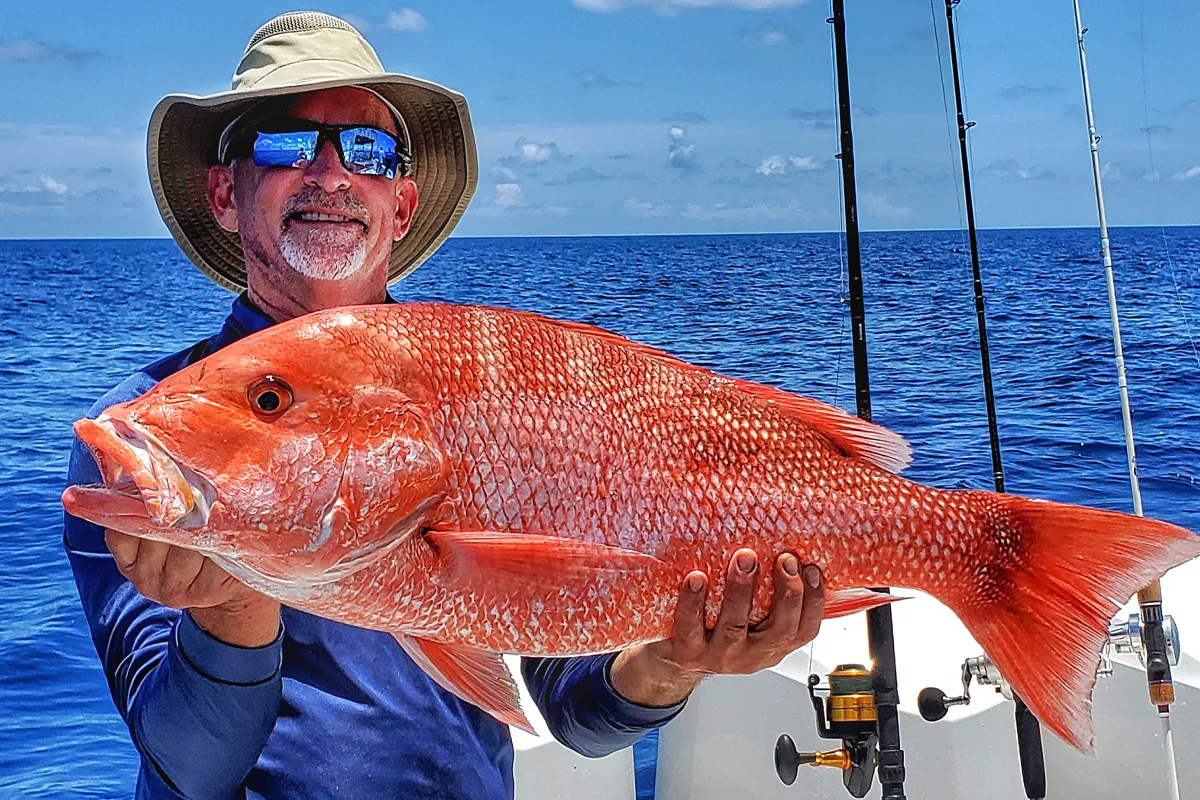
Useful Knots to Know
When it comes to saltwater bottom fishing, using the right knot can make all the difference. Here are some of the best knots for saltwater bottom fishing:
- Palomar knot: The Palomar knot is one of the strongest and most reliable knots for saltwater fishing.
- Improved clinch knot: The improved clinch knot is a classic knot that is easy to tie and works well for most bottom fishing applications.
- Uni knot: The uni knot is a versatile knot that can be used for tying on hooks, swivels, and other terminal tackle.
Monofilament vs Fluorocarbon
When it comes to fishing line for saltwater bottom fishing, there is a debate about whether mono or fluoro is better. Here are some pros and cons of each:
- Mono: Mono is less expensive and more stretchy, which can be beneficial for absorbing the shock of hard-hitting fish. However, it is also more visible in the water and can deteriorate faster from exposure to the sun and salt.
- Fluoro: Fluoro is more expensive, but it is also more invisible in the water and more abrasion-resistant. However, it is stiffer than mono and has less stretch, which can make it more difficult to absorb shock and increase the risk of break-offs.
Ultimately, the choice between mono and fluoro comes down to personal preference and the specific fishing conditions. Some anglers even use a combination of both by using a fluoro leader with a mono mainline.
Conclusion
When it is all said and done, bottom fishing is a popular and rewarding saltwater fishing technique that requires proper equipment, rigging, and techniques to be successful. Using the right setup, bait, and techniques can greatly increase your chances of catching a variety of bottom-dwelling species, including tilefish, snapper, and grouper.
It is important to consider the specific fishing conditions when selecting the best rig, weights, hook, and bait for bottom fishing. Advanced techniques, such as rigging a line and fishing in strong currents or ocean environments, can help anglers maximize their success.
When bottom fishing in saltwater, using the right knots and fishing line, such as mono or fluoro, can also make a big difference. In The Spread provides educational videos from world-renowned fishermen that can help anglers improve their bottom fishing skills and techniques.
With the right knowledge and equipment, bottom fishing can be an exciting and rewarding experience for saltwater anglers of all levels. So get out there, experiment with different techniques, and have fun exploring the ocean depths.

